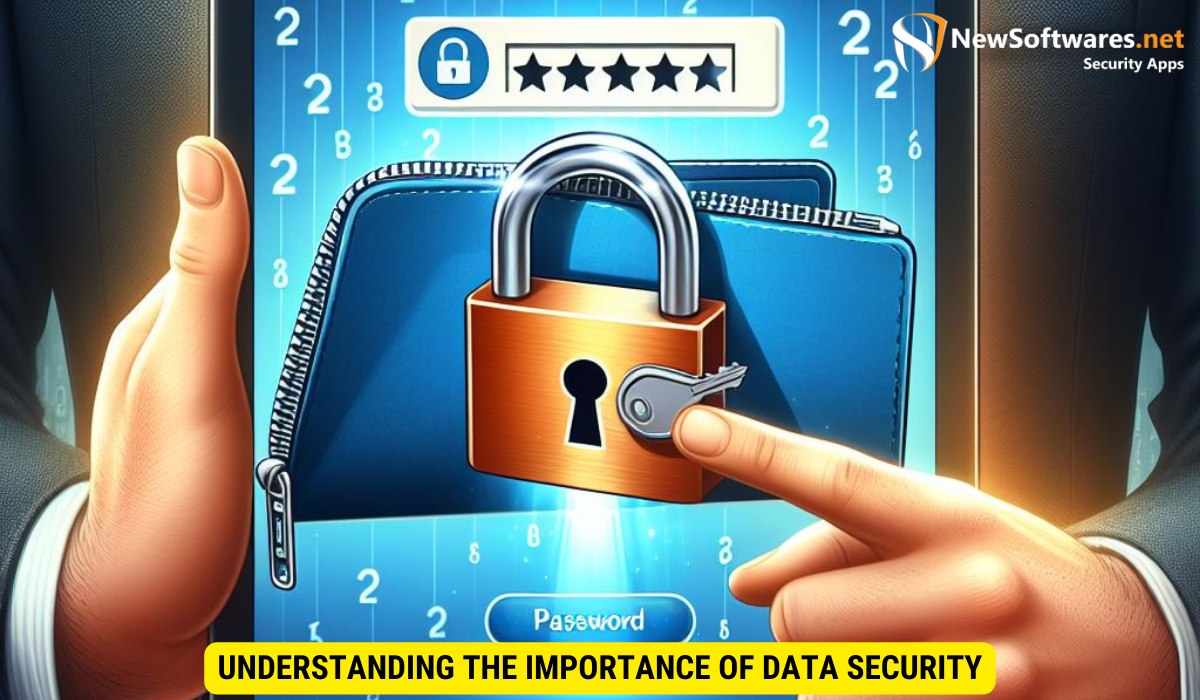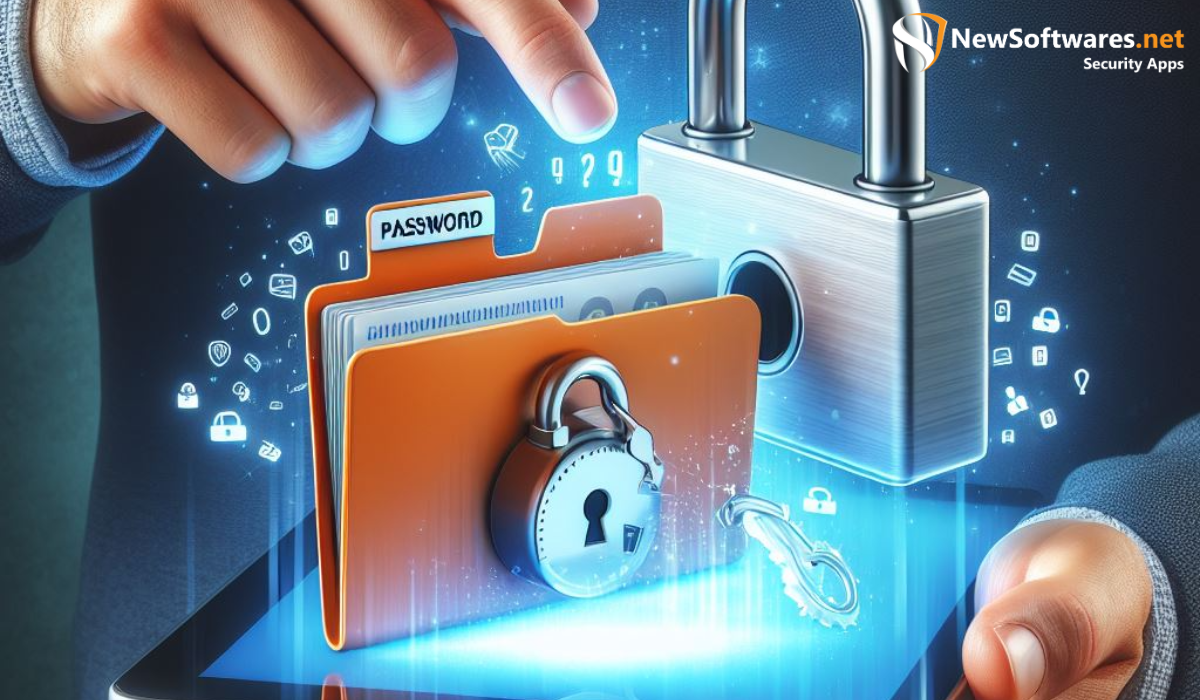To lock a folder on your iPad, ensure your device’s software is up to date, locate the folder you want to lock, and use the built-in lock feature in the iOS to secure it with a passcode or biometric authentication.
In today’s digital age, protecting our data has become more important than ever. With the increasing number of cyber threats, it’s crucial to take steps to secure our personal and sensitive information. One effective way to do this is by locking folders on your iPad. In this step-by-step guide, I’ll walk you through the process of securing your data on your iPad, ensuring that your information remains safe and confidential.
Understanding the Importance of Data Security

Before diving into the process of locking a folder on your iPad, let’s first understand why data security is of utmost importance. Our iPads contain a wealth of personal information, including photos, documents, and even financial details. If this data falls into the wrong hands, it can lead to identity theft, privacy breaches, and other devastating consequences.
Data security is not just a buzzword; it is a critical aspect of our digital lives. In today’s interconnected world, where our devices hold a treasure trove of personal information, it is essential to take proactive measures to protect our data. The repercussions of a data breach can be far-reaching, affecting not only our financial well-being but also our mental and emotional state.
The Risks of Unsecured Data on Your iPad
When your data is left unprotected on your iPad, you expose yourself to various risks. For instance, if someone gains unauthorized access to your device, they can easily browse through your files, compromising your privacy and security. Your personal photos, confidential documents, and intimate conversations could all be laid bare, leaving you vulnerable and exposed.
Moreover, the consequences of unsecured data extend beyond the digital realm. Imagine the distress of discovering that your private photos have been leaked online or that your financial information has been used to commit fraud. These scenarios can have a profound impact on your personal and professional life, causing immense stress and damage that may take years to rectify.
Benefits of Locking Folders on Your iPad
By locking folders on your iPad, you add an extra layer of protection to your sensitive data. This simple yet effective measure ensures that even if someone gains physical access to your device, they won’t be able to access your confidential information without your permission.
Furthermore, locking folders on your iPad provides peace of mind, knowing that your personal information is secure, even if your iPad is lost or stolen. In the unfortunate event of misplacing your device, you can rest assured that your sensitive files and documents are safeguarded from prying eyes. This added security measure not only protects your privacy but also helps prevent potential financial loss and reputational damage.
Remember, data security is not a one-time task but an ongoing commitment. Regularly updating your device’s software, using strong and unique passwords, and being cautious while downloading apps or clicking on suspicious links are all essential practices in maintaining a secure digital environment. By taking these steps and locking folders on your iPad, you can enjoy the benefits of technology without compromising your privacy and security.
Getting Started: Preparing Your iPad
Before you begin the process of locking a folder on your iPad, there are a few important steps you need to take to ensure a smooth and successful experience.
Checking Your iPad’s Software Version
The first step is to check the software version on your iPad. To do this, go to your iPad’s Settings app, then tap on “General” and select “Software Update.” Make sure your iPad is running the latest version of iOS. If an update is available, follow the on-screen prompts to download and install it. Keeping your device up to date ensures that you have access to the latest security features and bug fixes.
Setting Up Your Apple ID and iCloud Account
Next, ensure that you have an Apple ID and iCloud account set up on your iPad. Your Apple ID is essential for accessing various Apple services, including iCloud, which plays a crucial role in securing your data. If you don’t already have an Apple ID, you can create one by visiting the Apple ID website or going to the Settings app on your iPad and selecting “Sign in to your iPad” or “Create New Apple ID.”
Step-by-Step Guide to Locking a Folder

Now that you’ve prepared your iPad, let’s dive into the step-by-step process of locking a folder.
Navigating to the Folder You Want to Lock
The first step is to navigate to the folder you wish to lock. Whether it’s a folder containing personal photos or important documents, locating the folder is the initial step to securing it.
Implementing the Lock Feature
Once you’ve located the folder, you can proceed to lock it using the built-in iOS lock feature. To do this, simply tap and hold on the folder until the options menu appears. Then, select the “Lock” option. You will be prompted to enter your passcode or use Touch ID/Face ID to authenticate the action. Choose your preferred method of security, ensuring that it is a combination that only you know or a biometric authentication unique to you.
Troubleshooting Common Issues
While the process of locking a folder is relatively straightforward, there may be instances where you encounter issues or have questions. Let’s address some common problems and provide troubleshooting tips.
What to Do If You Forget Your Password
If you forget the password or passcode you set to lock a folder, don’t panic. On your iPad, go to the Settings app, select “Touch ID & Passcode” or “Face ID & Passcode,” depending on your iPad model, and tap on “Change Passcode.” Follow the prompts to reset your passcode and regain access to the locked folder. It’s important to choose a memorable, yet secure, passcode that you won’t easily forget.
Resolving Locking Errors
If you encounter any errors while trying to lock a folder, such as the folder not locking or the lock feature not appearing, there are a few potential solutions. First, ensure that your iPad is updated to the latest software version. If your device is already up to date, try restarting your iPad and attempting the lock process again. If the issue persists, consider reaching out to Apple Support for further assistance.
Maintaining Your iPad’s Security
Securing your data doesn’t stop at locking folders. To maintain your iPad’s security and protect your information, it’s important to adopt some best practices.
Regularly Updating Your iPad’s Software
Keep your iPad’s software up to date by installing the latest updates as soon as they become available. These updates often include security enhancements, bug fixes, and other improvements that help safeguard your device and data. Set your iPad to automatically install updates or periodically check for updates manually.
Best Practices for Data Security on Your iPad
In addition to locking folders, there are several other measures you can take to enhance your iPad’s security. Avoid downloading apps from untrusted sources, enable two-factor authentication for your Apple ID, regularly backup your data using iCloud or iTunes, and be cautious when sharing sensitive information online. By adopting these best practices, you can further protect your data and minimize the risk of security breaches.
Key Takeaways
- Locking folders on your iPad adds an extra layer of protection to your sensitive data.
- Regularly updating your iPad’s software helps ensure that you have access to the latest security features.
- If you forget your password or passcode, you can reset it in the iPad’s Settings app.
- Securing your data goes beyond locking folders; adopt best practices for data security on your iPad.
- By prioritizing data security, you can have peace of mind knowing that your information remains safe and confidential.
FAQs
Q: Can I lock individual files within a folder on my iPad?
No, the built-in lock feature on your iPad locks entire folders, not individual files. If you need to secure specific files, consider using a dedicated file-locking app from the App Store.
Q: Will locking a folder on my iPad impact its functionality?
No, locking a folder on your iPad will not impact its overall functionality. You will still be able to access and use your device as usual, with the added benefit of enhanced security for your locked folders.
Q: Can I unlock a folder on my iPad without a passcode or biometric authentication?
No, unlocking a folder on your iPad requires either the passcode you set or the biometric authentication method you configured, such as Touch ID or Face ID. Without this, you will not be able to unlock the folder.
Q: Are there any alternatives to locking folders on my iPad?
Yes, if you prefer not to use the built-in lock feature, you can explore third-party apps from the App Store that offer additional encryption and security features for your folders and files.
Q: Can I access locked folders on my iPad from another device?
No, the lock feature on your iPad is device-specific. Locked folders can only be accessed and unlocked on the same iPad where they were locked. If you wish to access the contents of a locked folder on another device, you will need to unlock it on that specific device.
Conclusion
Securing your data on your iPad is crucial to safeguarding your personal information from potential threats. By following this step-by-step guide, you can take the necessary steps to lock your folders and add an extra layer of protection to your sensitive data. Remember to maintain your iPad’s security by regularly updating its software and implementing best practices for data security. By prioritizing data security, you can have peace of mind knowing that your information remains safe and confidential.
